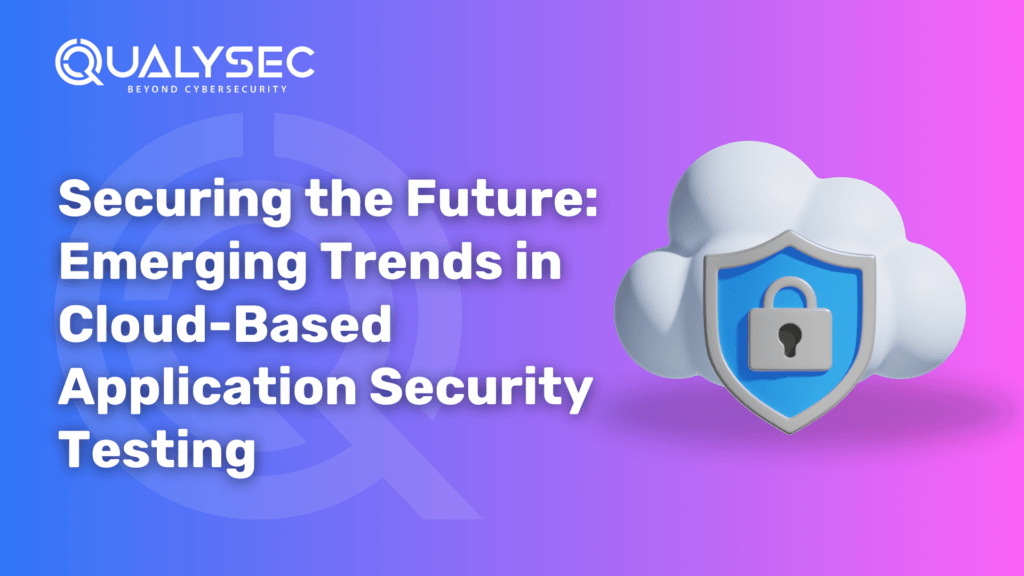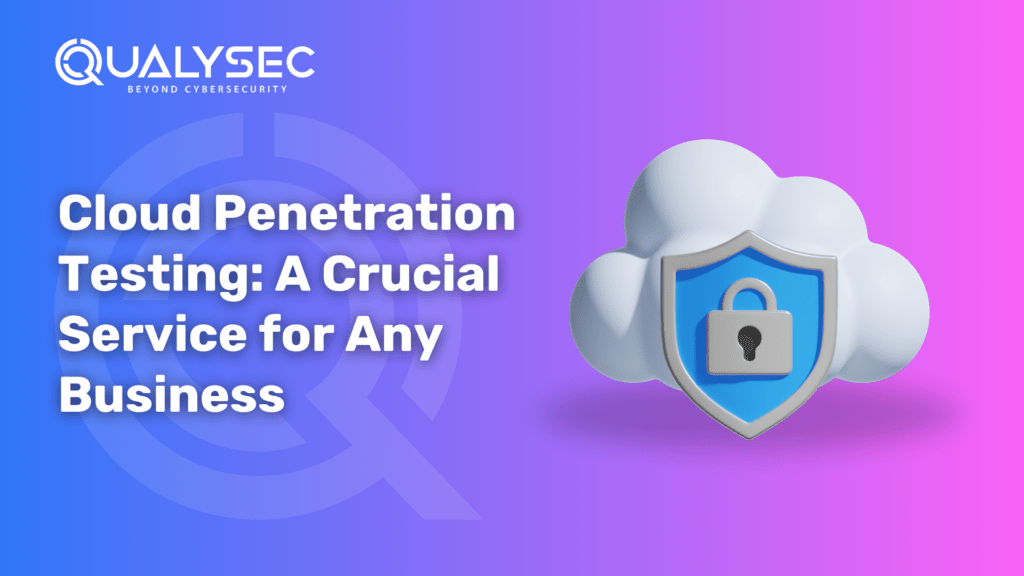Securing the Future: Emerging Trends in Cloud-Based Application Security Testing
Despite significant cybersecurity spending, 78% of senior IT and security professionals think their firms are not adequately prepared for a cyberattack, according to a new poll. Given that 50% or more of the enterprises surveyed in cloud-based application security testing report are concerned about cloud threats. It’s no surprise that organizations are focusing on strengthening their cloud security posture going forward. Several main cloud security techniques are emerging as the most popular and successful during this process. We evaluated the top cloud security trends and gave insights on methods that may help you apply them to help you make an informed choice on how to improve your organization’s security posture. Understanding Cloud Security Testing Cloud security testing refers to the strategies, technologies, laws, and safeguards used to protect data, applications, and infrastructure hosted or managed inside cloud ecosystems. These cloud ecosystems include public clouds such as Amazon Web Services, Microsoft Azure, and Google Cloud. What is the Purpose of Cloud Security Testing? The primary purpose of cloud security is to ensure the confidentiality, integrity, and availability of assets and data in cloud settings. It also seeks to reduce risks associated with potential security dangers and vulnerabilities. Furthermore, it detects security flaws in your cloud service before hackers do. Depending on the kind of cloud service and the provider, various manual approaches, cloud penetration testing methodologies, and cloud security testing tools may be utilized. “Also explore: – The purpose of penetration testing Why Cloud-Based Penetration Testing Become a Necessity? Cloud security, like cloud computing, grew in tandem as enterprises sought to protect all assets in the cloud environment. During the COVID-19 pandemic, cloud security hit a new high due to a rapid surge in cloud use. Within the first year of the pandemic, the cloud computing industry in the United States grew from $73.6 billion to $274.79 billion. Businesses began transitioning to the cloud since they could no longer rely entirely on local servers and in-house hardware, and these organizations needed to safeguard their cloud infrastructure and applications. Furthermore, the explosive expansion of cloud-based application security testing has led to a phenomenal increase in cybercrime. As a result, cloud security became the first line of protection, allowing enterprises to operate their operations seamlessly. As cloud security progressed, new technologies were introduced, strengthening the foundation of cloud security. How is Cloud Penetration Security Performed? Cloud pentesting requires some steps to be followed, such as: Information Gathering and Planning (Reconnaissance): Here the service provider gathers all the information about the cloud application and plans a checklist for the further process of testing. Automation Scanning: Here automated cloud-based pen testing tools are used to scan the surface-level vulnerabilities to exploit them before a real hacker does. Manual Testing: The pentesters in this step, go deep into the application manually and run tests to mitigate the vulnerabilities found. Reporting: In this phase, the pentesters prepare a comprehensive and development-friendly report which consists of every detail about the vulnerability found and how to fix it. Want to check what the pentest report looks like? Click here to download the sample report. Latest Penetration Testing Report Download Consultation: This phase refers to when the developer needs any kind of help in resolving the issue, the testers are ready for a consultation call. Retest: In this phase, testers again test the app if there are any flaws left after the remediation from the developer’s end. What are the Threats to Cloud-Based Application Security Testing? Understanding the hazards associated with cloud computing is a critical first step. The following are the top three security threats in cloud security: 1. DDoS The most prevalent type of cloud assault is exceedingly devastating. Furthermore, DDoS (Distributed Denial of Service) is a type of attack that includes denying legitimate users access to internet services by flooding them with fraudulent connection requests. How to Deal: Have too much bandwidth on your company’s internet connection. The more bandwidth you have, the more work hackers must put in to overwhelm your connection. Discover vulnerabilities in your system – use cloud security testing tools to scan your network and system for flaws that may be used to launch DDoS assaults. Maintain a backup internet connection – a backup connection with a distinct pool of IP addresses gives an alternate way if the primary circuit becomes overburdened. Configure WAF rules to block out malicious IP addresses – Create custom rules in your WAF firewall to monitor and filter traffic based on your needs. 2. Data Breaches and Leaks The loss of personal and sensitive information and data – both mistakenly and purposefully – is the most significant and crucial cloud computing hazard for enterprises today. Insider threats are another source of critical information leakage. Storing sensitive data and passwords in plain text files makes them vulnerable if attackers get access to them. How to Deal: Encrypt Data- Sensitive data should not be stored in the cloud unless it is encrypted. Change your password- Keep all of your passwords in a secure location. Make better password choices and enhance the frequency with which they are changed. Set Permissions- Not all workers require equal access to your important files. Assign permissions based on a ‘need to know’ basis to avoid unauthorized access. Educate your employees- Train your employees to avoid unwittingly releasing important information. 3. Unauthorized Data Access It is the most serious threat to cloud security. Furthermore, according to a recent cloud security spotlight research, 53% of respondents consider unauthorized access via faulty access restrictions and employee credential abuse to be the most serious cloud security concern. Unauthorized access occurs when people get unauthorized access to company data, networks, endpoints, devices, or applications. How to Deal: Create a structure for data governance for all user accounts. All user accounts should be directly connected to centralized directory services such as Active Directory, which may monitor and cancel access privileges. Third-party security technologies can be used to frequently get lists of users, privileges, groups, and roles from cloud service






